What is the use of mineral oil?
Mineral oils (paraffinum liquidum/mineral oil) are ingredients that commonly used in the production of skincare and cosmetic products. Some of them can form a thin film on the skin surface to reduce water loss. Mineral oil hydrocarbons have different components and structures. Two types of mineral oil hydrocarbons, namely mineral oil saturated hydrocarbons (MOSH) and mineral oil aromatic hydrocarbons (MOAH) mixtures, some of them may pose potential health risks to the human body:
MOSH
Depending on their molecular weight, MOSH can be divided into short-chained (number of carbon atoms < C25) or long-chained (number of carbon atoms from C16 to C35, and from >C35 to C50). Animal tests have shown that some short-chained MOSHs are related to the formation of hepatic granuloma.
As for long-chained MOSHs, they may be accumulated in adipose tissues, lymph nodes, spleen and liver, causing lipogranulomas and microgranulomas.
MOAH
They can also be divided into short-chained and long-chained according to their molecular weight. They may contain carcinogens, and some are even suspected of being genotoxic and carcinogenic.
In view of this, some countries have set relevant recommendations and restrictions on the amount of these substances in lip balms.
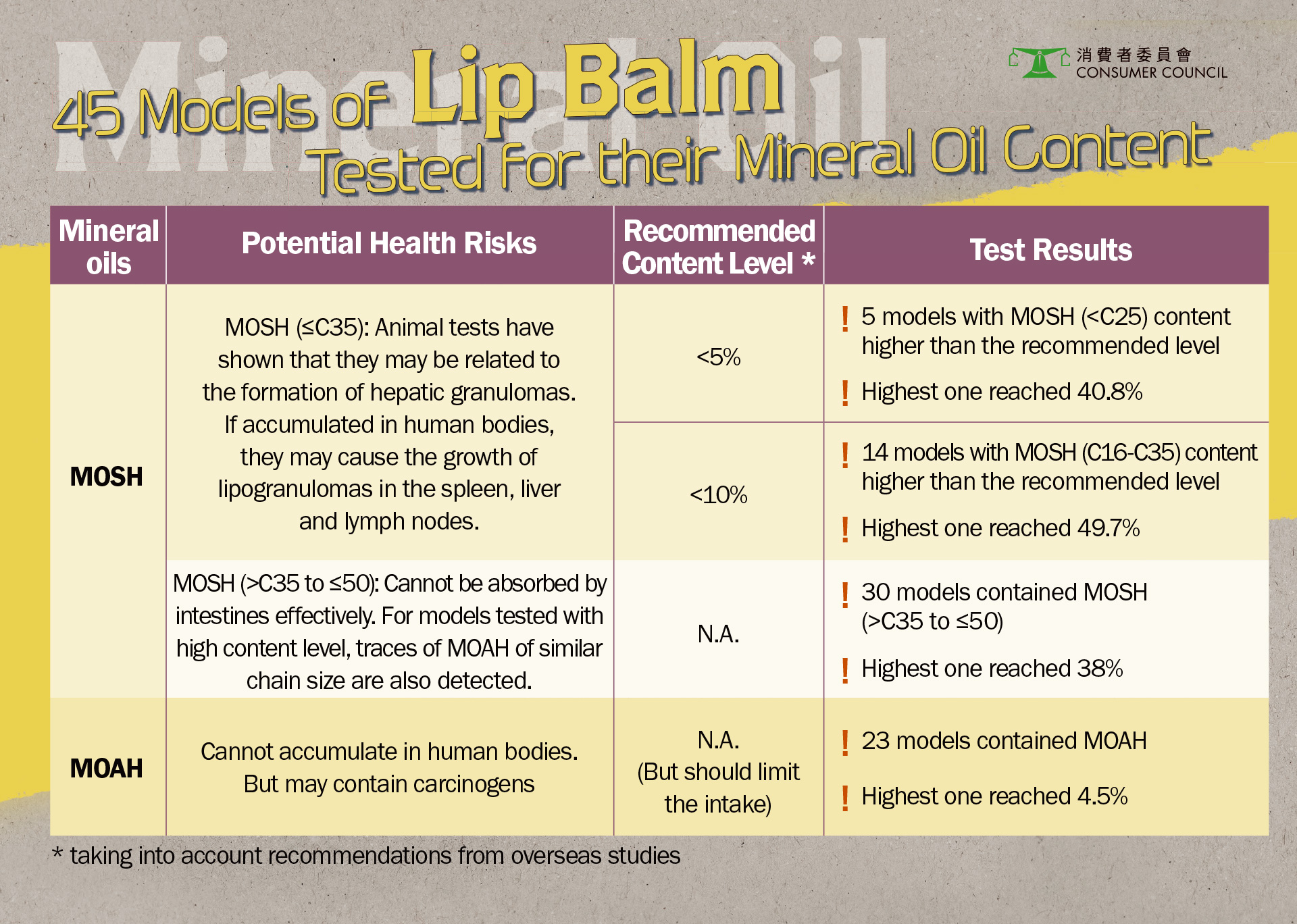
How can I reduce the intake of mineral oils?
Read the list of ingredients and choose products carefully
If you see mineral oils such as petrolatum, paraffinum liquidum, polyethylene, polybutene, etc. (e.g. in picture below) on the list of ingredients of a product, and these ingredients are listed as its first 3 ingredients, then this product has a higher chance of containing a higher amount of MOSH. Besides, MOAH can be found in many products with a high MOSH content. Therefore, consumers should avoid using lip balms that contain these ingredients.
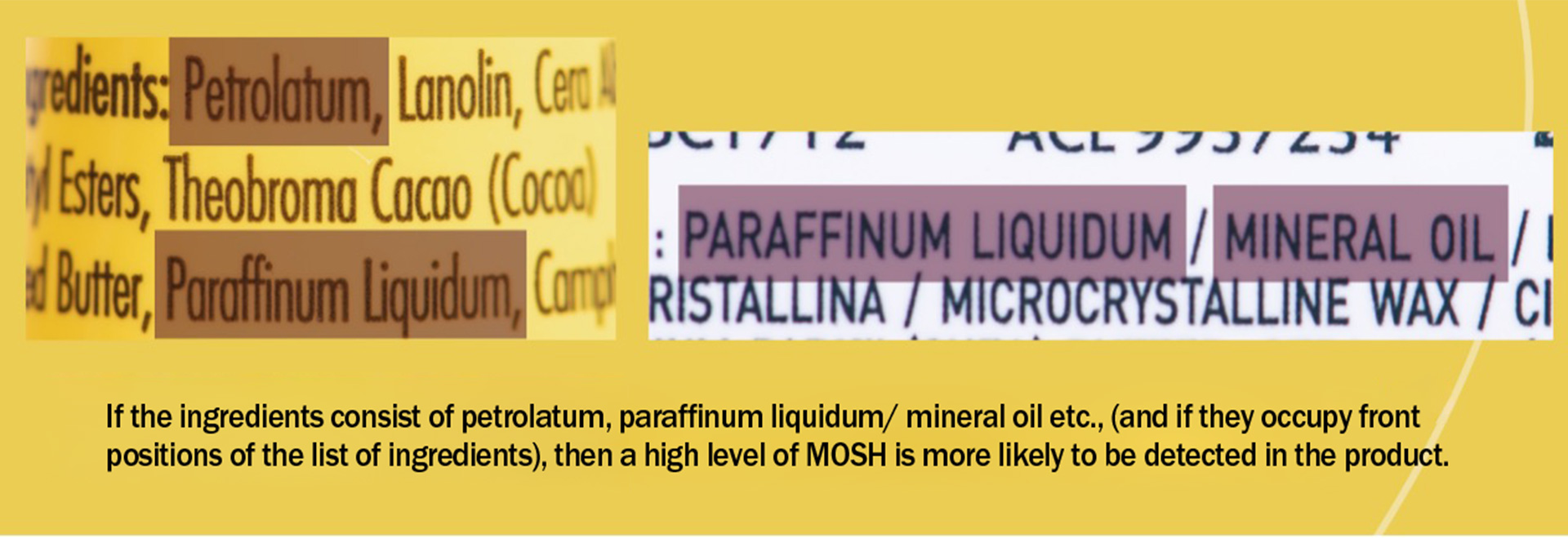
Watch out for allergens
In addition to the above-mentioned mineral oils which may pose health risks to the human body, some lip balm products may also contain allergens. Therefore, consumers should be cautious when applying lip balms to avoid allergic reactions.
Fragrance
Many lip balm products also contain fragrance substances. In fact, each type of fragrance may be created by mixing of many chemical substances. Some of these fragrance substances are more allergenic. Other fragrance substances that are not highly allergenic themselves but can form more allergenic substances after being exposed to air, e.g. limonene and linalool commonly found in lip balm products.
Antioxidants
Antioxidants which are used to prevent the oxidation of lip balm may also cause allergies. After applying products on the lips for a certain period of time, lip balm users, especially those who suffer from eczema, may develop allergic reactions such as itchiness, chapped lips, or even burning and tingling sensations.
Heavy metals
Nickel is an example of a common allergen. When it comes into contact with the skin, nickel may cause allergic contact cheilitis with conditions such as dryness, chapped lips, rashes, swelling, as well as burning and tingling sensations. Furthermore, some studies have found that eye cosmetic products with nickel content as low as 1mg/kg may cause allergies to people who have sensitive skin. Therefore, consumers should pay special attention to the nickel content in lip balms.
Lanolin and UV filters
Lanolin, which is used to moisturise the skin, and 2 ingredients in sunscreens, benzophenone-3/oxybenzone and ethylhexyl methoxycinnamate, are common allergens. The latter is even a potential endocrine disruptor.
These situations may also damage your lips!
Using a lip balm that contains allergenic ingredients may significantly increase the chance of damaging your lips. You should also note that certain situations such as overexposure to the sun, cold, dryness and extreme weather can make your lips dry, rough, dull, or even chapped. In addition, frequent breathing through the mouth may also aggravate the problem of dry lips.
Lip Moisturising Tips
To always keep your lips moist, the best method is to apply lip balm regularly, which can help resist changes in the environment. If you plan to have prolonged outdoor activities, you should choose a lip balm with sun protection factors. If you plan to stay indoors, you can use normal lip balm.
You should also avoid wiping your lips frequently, as this will weaken the natural oily protection layer on your lip surface. Before eating and drinking, wipe off the lip balm to reduce the chance of ingesting mineral oils.
The Consumer Council has tested 45 models of lip balm on the market. If you want to know which ones are safer, watch the video below
and read the report, “80% of Lip Balm Models Found to Contain Harmful Mineral Oils Some with Potential Risks of Cancer”, CHOICE Magazine, Issue 521 (Chinese version only).


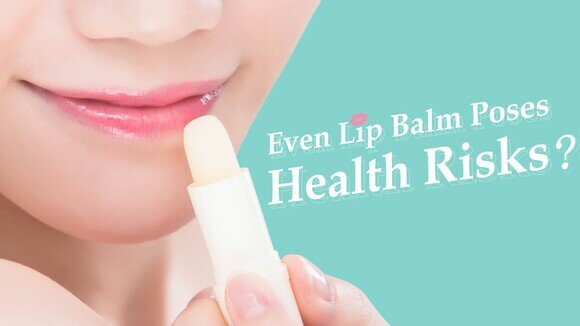



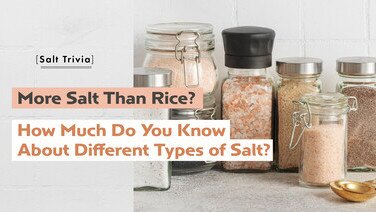

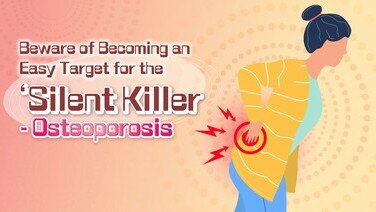
![[Handwashing Cold Knowledge] Debunking 4 common handwashing myths](/f/guide_detail/409326/376c212/43_4%E5%80%8B%E6%B4%97%E6%89%8B%E5%B8%B8%E8%A6%8B%E8%BF%B7%E6%80%9D_Eng.jpg)

